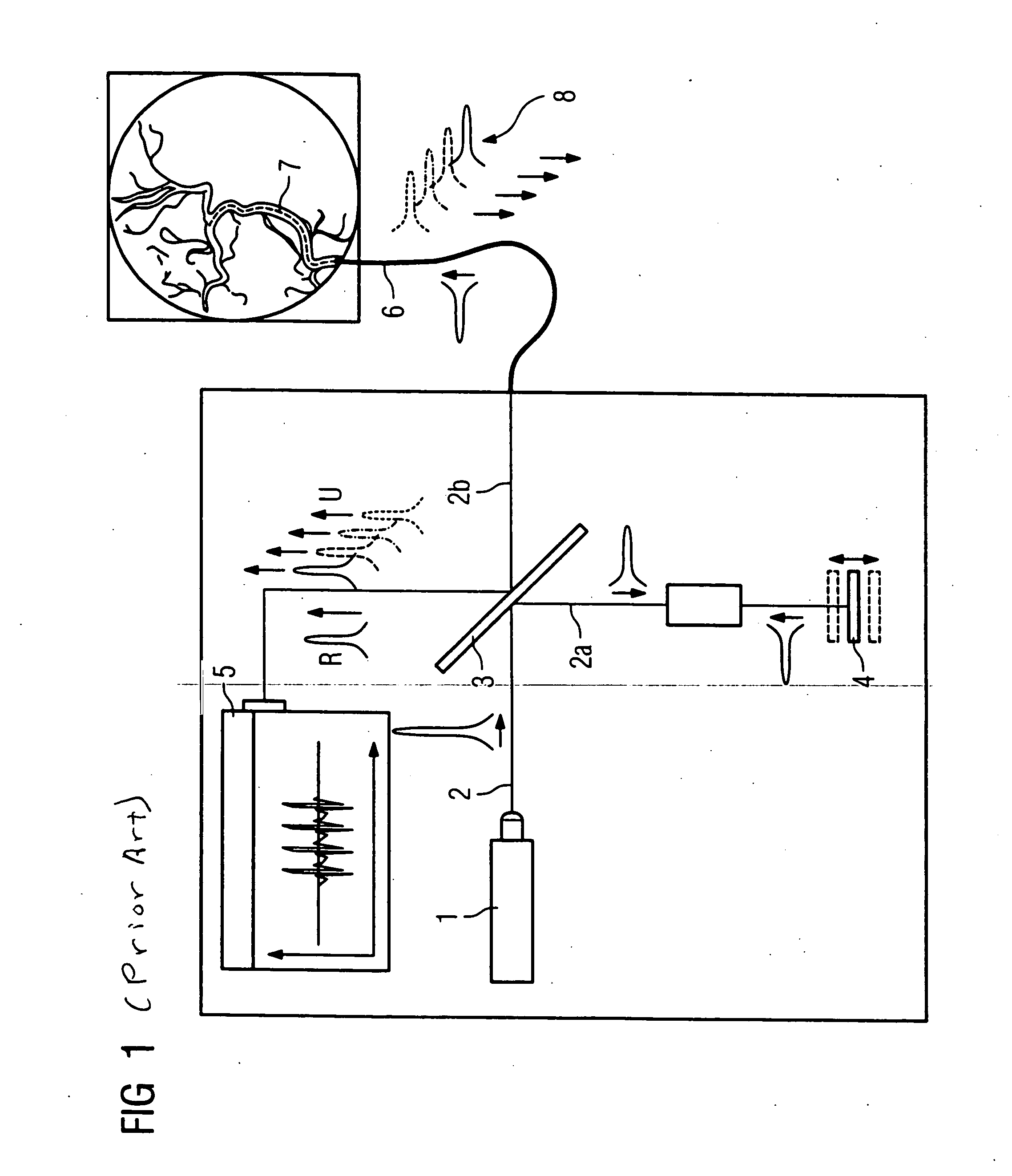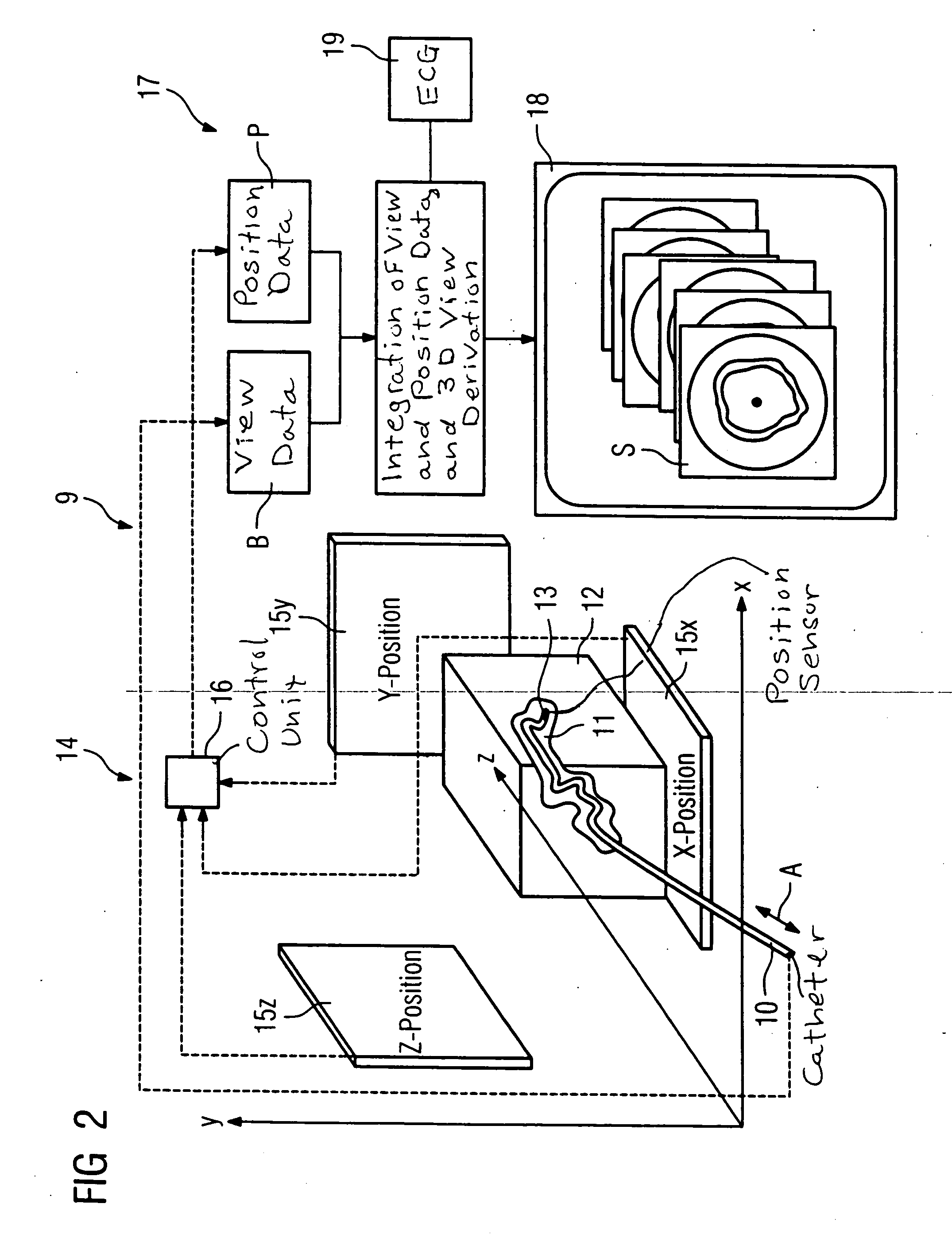Optical coherence tomography system for the examination of human or animal tissue or of organs
a coherence tomography and optical coherence technology, applied in the field of optical coherence tomography system for the examination of human or animal tissue or organs, can solve the problems of large amount of data, need to use additional movement mechanisms, and the doctor generally has no possibility of manually guiding the catheter
- Summary
- Abstract
- Description
- Claims
- Application Information
AI Technical Summary
Benefits of technology
Problems solved by technology
Method used
Image
Examples
Embodiment Construction
[0024]FIG. 1 explains the basic concept of optical coherence tomography. A light source, a laser 1 in the present example, emits a ray of light 2 toward a semi-transparent mirror 3. A first part 2a of the light ray is deflected to a reference branch, where the length of ray 2a is modulated by means of a movable mirror 4, for example. The modulated reflected light strikes the semi-transparent mirror 3 and continues as reference light component R toward an interferometer 5.
[0025] A second part 2b of the light ray enters a catheter 6, which is inserted into a vessel 7 in this example. The light is emitted from the tip of catheter 6 and shines on the tissue of the vessel 7. The reflected light, which is also modulated depending on the position of the reflecting surface as indicated by the four reflection light symbols 8, again enters the catheter 6, continues to the semi-transparent mirror 3 and from there continues as a reflected examination light component U to the interferometer 5. ...
PUM
 Login to View More
Login to View More Abstract
Description
Claims
Application Information
 Login to View More
Login to View More - R&D
- Intellectual Property
- Life Sciences
- Materials
- Tech Scout
- Unparalleled Data Quality
- Higher Quality Content
- 60% Fewer Hallucinations
Browse by: Latest US Patents, China's latest patents, Technical Efficacy Thesaurus, Application Domain, Technology Topic, Popular Technical Reports.
© 2025 PatSnap. All rights reserved.Legal|Privacy policy|Modern Slavery Act Transparency Statement|Sitemap|About US| Contact US: help@patsnap.com



